The worst feeling you can possibly have is to use a runny and weak curry sauce with an Indian cuisine classic. A watery curry is like sealing your culinary cooking fate, so you want to avoid this at all costs. But when disaster does strike, and the sauce comes out worse than you expected, you’ll need to have a quick fix on stand-by for thickening it.
Sometimes, it’s hard to avoid making it a tad watery, but luckily, there are several ways you can thicken curry sauce, including adding a roux, using cornstarch or flour, or reducing the sauce. But first, let’s cover what curry is, what makes the sauce watery, how thick it should be, and the different methods on how to thicken curry sauce.
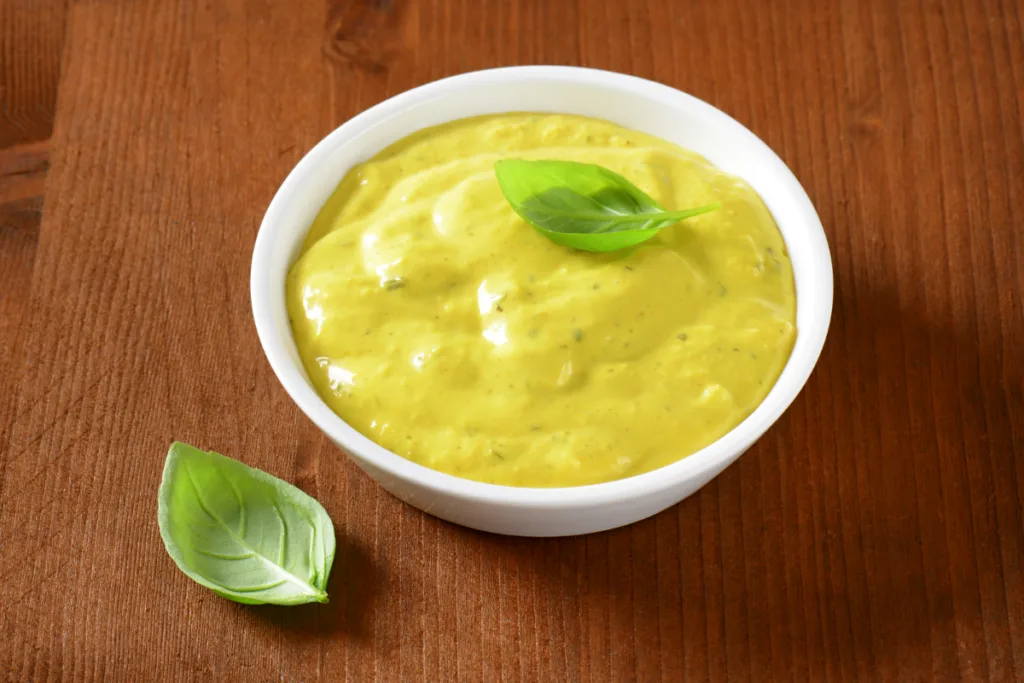
Jump To
What Is Curry Sauce?
Curry sauce is a purely delicious Asian blend of spices, herbs, curry paste, and vegetables that are cooked with coconut milk or yogurt to give it a deliciously rich and creamy texture. It’s a popular sauce that originated from the Indian subcontinent, and as its name suggests, it’s used as a base for many Indian curry dishes, such as chicken curry, lamb curry, and vegetable curry.
Now, the ingredients used in curry sauce can vary depending on the region and the chef’s preference, but some common ingredients include cumin, coriander, turmeric, ginger, garlic, chili peppers, and onions. These ingredients are ground into a paste and added to the sauce to give it its distinct flavor.
Its uses vary from a marinade, a dipping sauce, or a base for soups and stews and also for vegetarian and vegan dishes, as it can be made without any animal products.
What Makes Curry Watery?
Reasons for a bad curry can vary, but more often than not, the problem most people face is a watery consistency. This can be frustrating, as it can make the dish considerably less flavorful, less enjoyable, and worse of all, less spicy to eat. This is why it’s always best to know why your sauce went wrong in the first place so you can avoid any future problems that may rear its head.
Too Much Water
An obvious reason can be from adding too much water to your curry sauce, which dilutes the flavor and aroma of the spices and herbs. The sauce should have a thick and creamy consistency, which can be done by using a balanced amount of liquid and other ingredients.
Not Enough Time to Cook
Cooking the sauce for the right amount of time is another area where many fail. If the sauce isn’t cooked long enough, it’ll develop a watery consistency and lack depth. This is because the ingredients in the sauce need time to release their flavors and thicken properly.
For example, onions in the sauce need to be cooked until they are soft and translucent before adding the other ingredients. Even cooking the sauce for too long can also result in a watery consistency, as the liquid can evaporate and leave behind a dry, unappetizing sauce.
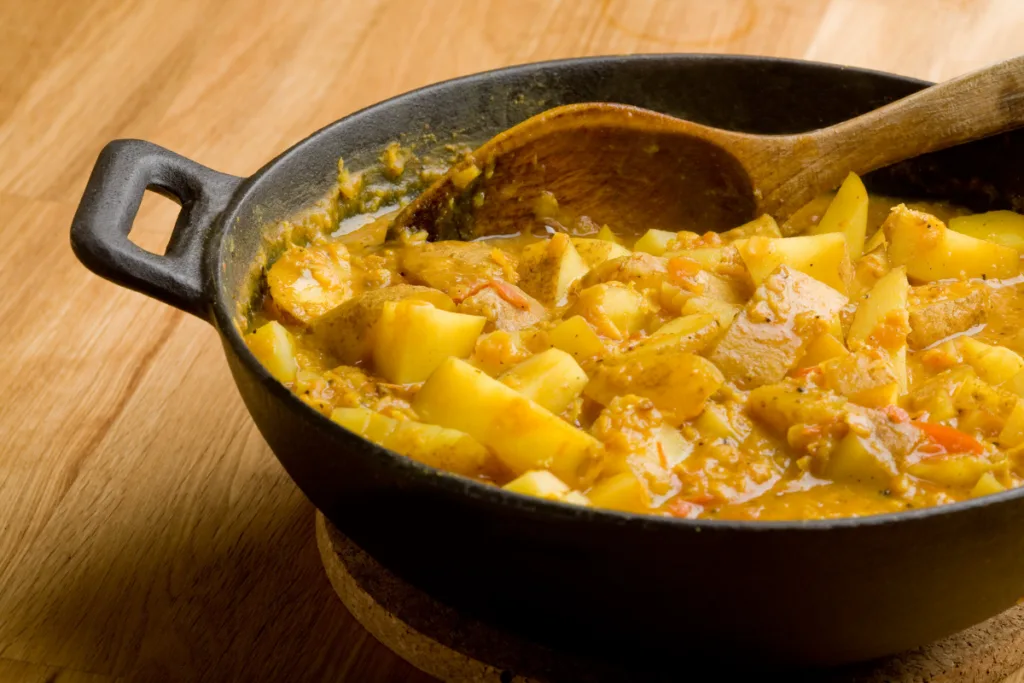
Too Many Vegetables
Having too many vegetables in the sauce can also lead to a watery mess. This is because vegetables release water as they cook, which can dilute the sauce and make it thin. So make sure to use them in moderation and balance them with other ingredients.
If you wanna avoid a watery sauce, you’d best sauté the vegetables before adding them to the sauce to remove excess water. Even using vegetables that are low in water content, such as bell peppers or mushrooms, can also help maintain the desired consistency of the sauce.
Using the Wrong Ingredients
The wrong ingredients or incorrect proportions are a more common problem for a runny curry sauce than you think. For instance, using low-fat coconut milk instead of full-fat coconut milk can cause the sauce to have a thinner consistency, as it has a lower fat content and may not thicken properly.
Similarly, adding too much yogurt or stock can dilute the sauce and make it watery. If you wanna avoid all this hassle, just use the right ingredients in the correct proportions and follow the recipe carefully.
How Thick Should Curry Sauce Be?
Your curry sauce should have a thick and creamy consistency that can coat the ingredients evenly. It should be just thick enough to cling to the back of a spoon and leave a trail when a finger is run through it.
However, the exact thickness will always vary depending on personal preference and the type of dish being prepared. If the sauce is too thick, it can easily be thinned out by adding a small amount of water or stock.
Ways to Thicken Curry Sauce
Simmer
Simmering your curry sauce is your best shot at effectively and easily thickening it. To do this, bring your sauce to a boil over medium-high heat and then reduce the heat to low and let it simmer for at least 20-30 minutes.
This allows the flavors to meld together and the sauce to thicken as the liquid evaporates. If the sauce is still too thin after 30 minutes, continue to let it cook until it reaches your desired consistency.
Keep an eye out, though, if you’re using ingredients like coconut milk or cream, as the sauce may thicken even more as it cools. If this happens, add a bit of water or broth to thin it out to your desired consistency.
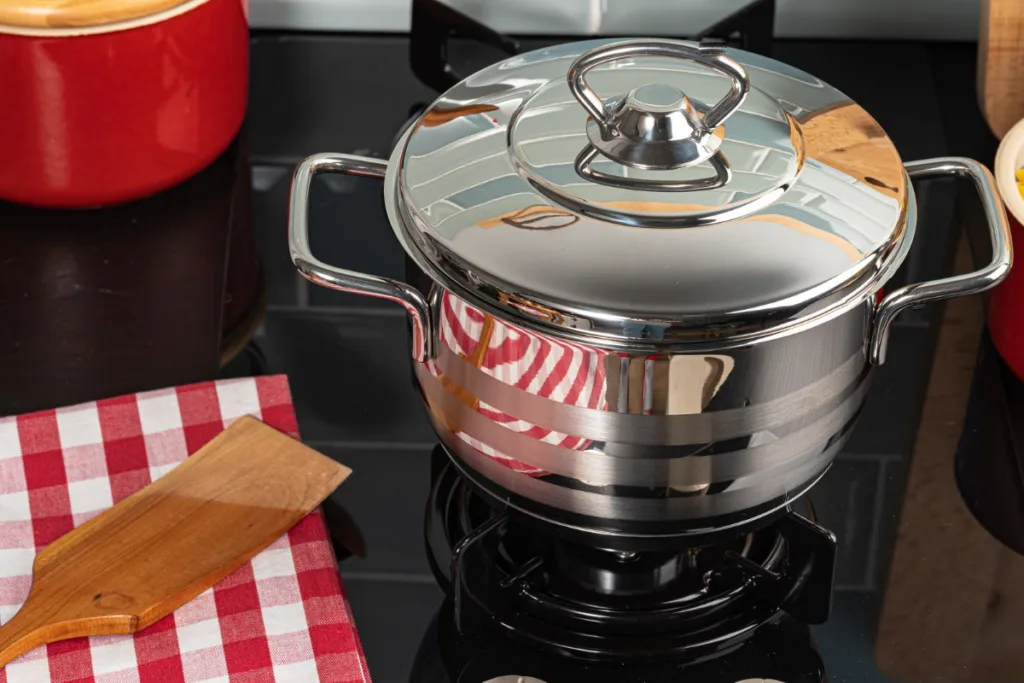
Combine Coconut
Coconut, in any of its various forms, is a popular thickening agent in curry dishes. However, if you plan on using coconut milk or cream, just remember that it takes longer to thicken than other thickeners like cornstarch or flour due to its higher fat content.
But if you do decide to go for it, simply add coconut milk or cream to the sauce during the cooking process. Start by adding a small amount of coconut milk or cream and gradually add more until you have a consistency you’re happy with.
Stir the sauce frequently to prevent the coconut from sticking to the bottom of the pan. If the sauce becomes too thick, add a bit of water or broth to thin it out.
Make A Roux
Another great classic technique to consider using is making a roux, as it’s a proven and tested method for effective thickening. Begin by melting butter in a saucepan over low heat and adding an equal amount of flour to create a paste. Cook the roux over low heat until it turns a light golden brown color, being careful not to burn it.
Then, add the roux to your curry sauce and stir until well combined. Stir the sauce frequently to prevent it from sticking to the bottom of the pan. If the sauce is still too thin, you can add more roux or let it simmer for a bit longer.
Use Yogurt
Yogurt is a very typical thickener in curry sauces, as it provides a similar consistency to cream with a creamy texture and tangy flavor. It’s also a simple and healthy way to add creaminess and flavor to your favorite curry dishes.
After you cook the sauce, let it cool for a few minutes, and then stir in a few tablespoons of plain yogurt until fully incorporated. Be sure to add the yogurt in small amounts to avoid making the sauce too tangy. Also, you should never add yogurt to the sauce if it’s hot, as it can curdle and separate.
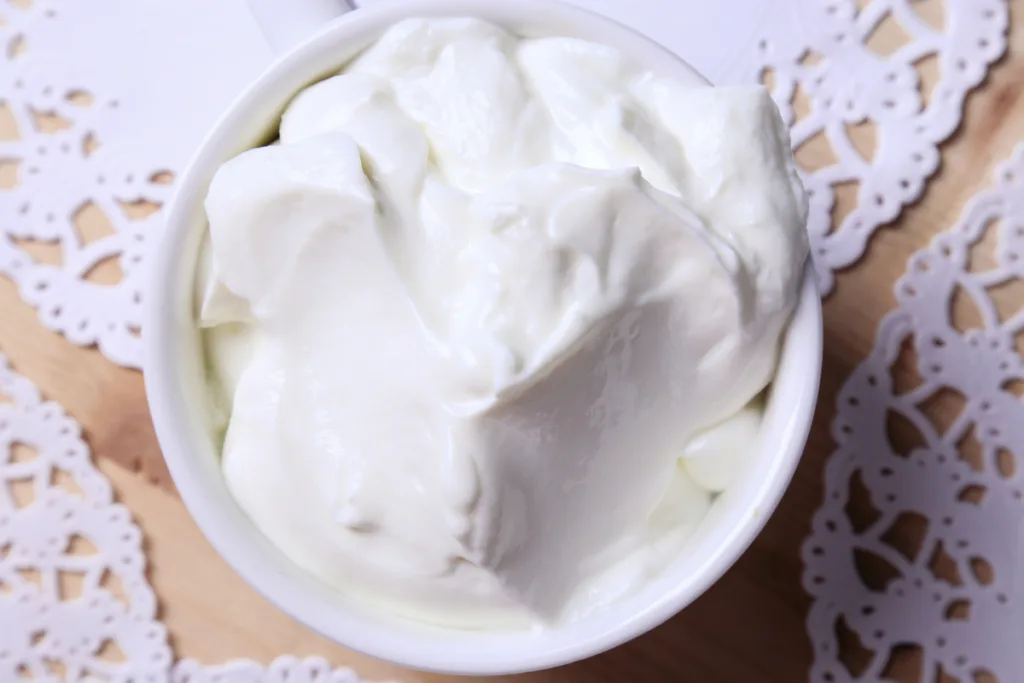
Add Tomato Paste/Puree
Tomato paste or puree is another great veggie-based ingredient that’s a more than viable option for thickening thanks to its high concentration of natural pectin. Pectin helps to thicken liquids by interacting with the liquid in the sauce.
This option can also add a rich, sweet flavor to the curry sauce and is a good source of vitamins and minerals, including vitamin C, potassium, and lycopene.
Using it is as easy as stirring in a few tablespoons of tomato paste or puree until it’s fully mixed in. The natural pectin found in tomato paste or puree will thicken the sauce and enhance its flavor. But be sure to add either in small amounts to avoid making the sauce too sweet.
Add Lentils Or Legume Puree
These aren’t your everyday thickener, but adding lentils or legume puree can actually be a great thickening alternative. Tossing them into your curry sauce provides a range of health benefits, including high fiber and plant-based protein content and regulating digestion.
Just cook the lentils or legumes in a separate pot until they are soft and tender, then puree them until they form a smooth paste. Add the puree to your curry sauce and stir well to combine. They’ll thicken the sauce and give it a creamy texture while also adding a rich, earthy flavor.
Add Some Ground Nuts
An easy way to add flavor, texture, and nutrition to your curry sauce is to chuck in some ground nuts. They’re high in healthy fats and plant-based protein and can help to lower cholesterol levels and reduce the risk of heart disease.
Just toast the nuts in a dry pan until fragrant and lightly browned, then grind them in a food processor or blender until they form a fine powder. Add the ground nuts to your curry sauce and stir well so the sauce will thicken and acquire a rich, nutty flavor.
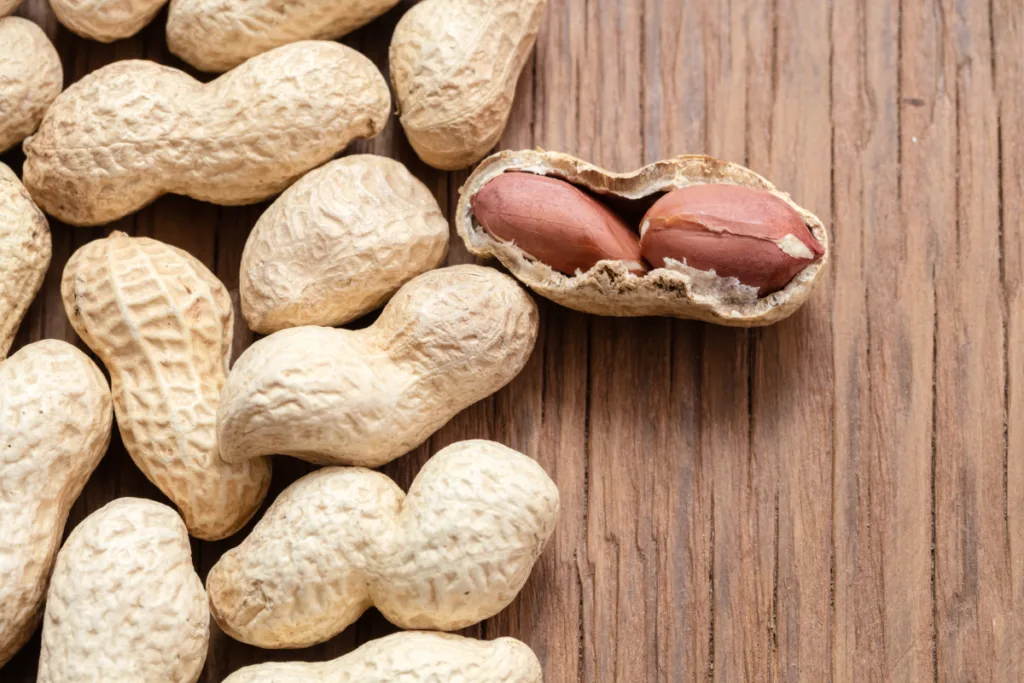
Add Peanut Butter
A nutty butter in a curry sauce? Now, here’s an option that you don’t see every day. This option can be a delicious addition to your curry sauce, as it adds both flavor and texture to your dish. It’s also a good source of healthy fats, protein, antioxidants, and essential nutrients.
If you wanna add it to your curry sauce, simply whisk it into the sauce as it simmers on the stove. Start with a small amount, such as a tablespoon or two, and gradually add more until you reach the consistency that you want. Be sure to keep stirring to ensure that the peanut butter is evenly distributed.
Puree Some of The Ingredients
You can even make a puree using some ingredients for a simple, delicious, and effective way to thicken curry sauce. On top of enhancing the flavor and texture of your curry sauce, this method will be jam-packed with antioxidants and anti-inflammatory compounds.
Onions, garlic, and ginger, to name a few, can help boost your immune system and reduce the risk of chronic diseases, while tomatoes are high in lycopene, which can protect against cancer and heart disease.
If you wanna use this method, chop the ingredients, such as onions, garlic, ginger, or tomatoes, into small pieces and blend them in a food processor until they form a smooth paste. Add the puree to your curry sauce and stir well to combine. The puree will thicken the sauce and give it a rich and flavorful texture.
If you wanna use this method, chop the ingredients, such as onions, garlic, ginger, or tomatoes, into small pieces and blend them in a food processor until they form a smooth paste. Add the puree to your curry sauce and stir well to combine. The puree will thicken the sauce and give it a rich and flavorful texture.
Cornstarch / Arrowroot Slurry
Now, here are some options you’ll most likely be familiar with. Cornstarch or arrowroot slurry has always been a popular method for thickening without compromising its flavor and texture. They’re gluten-free and simple enough for anyone to add and use.
Simply mix equal parts cornstarch or arrowroot with cold water to form a smooth paste, then add the slurry to your curry sauce and stir well. The slurry will thicken the sauce and give it a smooth and silky texture, and you can adjust the amount to achieve your desired consistency.
